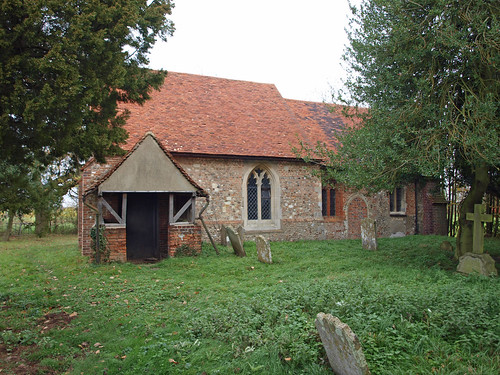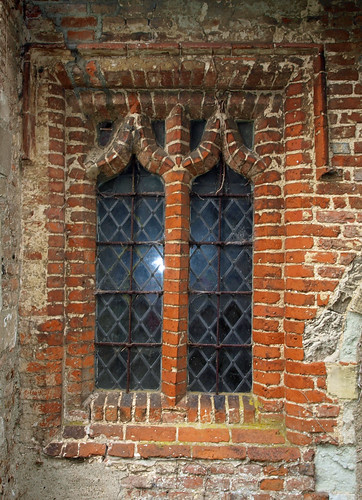It took me ages to find All Saints and when I did it was to find it in a sadly dilapidated state and appears to slowly falling down. Not surprisingly it was locked, it's probably too dangerous to go into anyway. The church is de-consecrated, owned by the local farm and the churchyard is a conservation area managed by Epping county council.
The precise origins of the church are unknown, but there are elements of the building that date back to the 14th Century. The Chancel and the Nave of the church are of an unknown date, but the east and west walls are known to be 16th Century in date. The church did at one time have a tower that held a single bell. (Built by John Dyer in 1594). In the book “The Buildings of England – Essex” by Nikolaus Pevsner, he makes reference to the church and describes it with a weather-boarded belfry with pyramid roof. Pevsner's survey of Essex was evidently carried out before the winter of 1953/54, and the book was first published in 1954. It follows the tower must have been pulled down post 1953.
The church itself is Grade 2 listed, but unfortunately is in a poor state of repair. The north nave wall is structurally unsound and this has led to the buildings inclusion on the Essex buildings at risk register.
The churchyard has a badger sett in and around some south-east graves - rather disturbing for those supposedly resting in peace!
This is one of the rare places that Arthur Mee failed to report on - perhaps it was too small for him to notice.
CHURCH. Nave and chancel, and weatherboard belfry with pyramid roof. Two early C16 brick windows in the chancel. - The chancel has a tiebeam with kingpost and four-way struts. Nicely moulded wall-plates. - PLATE. Cup of 1627.
CHURCH. Nave and chancel, and weatherboard belfry with pyramid roof. Two early C16 brick windows in the chancel. - The chancel has a tiebeam with kingpost and four-way struts. Nicely moulded wall-plates. - PLATE. Cup of 1627.
Abandoned and derelict church on the remote Berners Hall estate.
In 1911, my great-great-aunt Julia Mortlock was a cook at Berners
Hall. By then, it was inhabited by James, Charles and Caroline Glasse,
two brothers and a sister from Morwenstowe in Cornwall. There was only
one other servant. By 1919, the farm had been sold to the Co-op, who
still own it today. I believe the grounds have a famous carp lake.


hi Simon, Its dave, the photographer from the 100 treasures book, we met on the launch night, hi, is this the church you mentioned that was worth visiting??
ReplyDeleteI'm not Simon - I just collaborate with him on his Essex church visits - so I can't answer the question but I think yes.
Delete